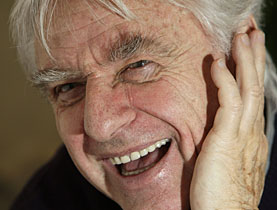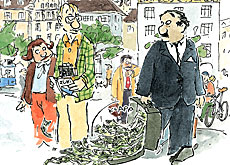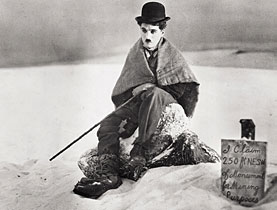Have you heard the one about Swiss humour?

Side-splitting wit has never been high on most people's list of Swiss qualities, but a new exhibition is attempting to explain the nation's psyche through its humour.
The Swiss National Museum has uncovered what has made the reserved country roar with laughter over the years. It reveals that many burning issues were just as relevant for past generations as they are now.
The exhibition’s title, Witzerland, is itself a pun – Witz meaning joke in German. Most of the material is in Swiss German – the most commonly spoken dialect – but the presentation also explores the legendary rivalry between language regions and cantons.
Visitors can peruse a welter of posters, film, television and radio clips that were painstakingly archived from the 1930s to present times. The Swiss public is also invited to send in their own national jokes that are presented at the exhibition in Zurich.
The object of the exercise was not to showcase Switzerland’s best one-liners, but to get under the skin of the Swiss people, according to curator Walter Keller.
Cheesy jokes
“I’m taking humour, satire and jokes as a mirror to express something about the history of the mentality of Switzerland,” he told swissinfo.ch. “I wanted this exhibition to stink like a cheese of Swissness so we come away and say that’s how we are and that’s how our humour really is.”
Keller was surprised to discover that many of the topics that are the butt of Swiss jokes today are the same themes that aroused witticisms decades ago. It seems the Swiss have always enjoyed sending up greedy bankers, immigrants, the wasteful state, their own notorious fickleness and island mentality.
“There is a stability of certain images and the jokes remained the same even during the punk movement,” Keller said. “Mentalities change very slowly while economic crises, revolutions and political systems come and go. You can have a revolution but someone still has to do the dishes.”
Walking around the exhibition, it soon becomes apparent that it is quite hard to precisely pin down Swiss humour. It is often a vehicle for people to get annoyances off their chests and usually involves subtle word play or a twist on mundane situations.
One joke sent in by a member of the public depicts a bystander watching a man raise the Swiss flag – a symmetrical white cross in the middle of a red background. “You’re hanging it the wrong way up,” the bystander scolds.
Regional rivalries
Keller noticed one glaring omission during his research. “Rough, tough, aggressive political satire is almost non-existent,” he said. Perhaps unsurprising in a federalist country of consensus politics and direct democracy.
But consensus only stretches so far. Rivalries have long existed between the different language speaking regions and between cantons. One room runs a television sketch of Marie-Thérèse Porchet – a drag act from the French-speaking region – who pokes fun at the Swiss Germans.
Another room is littered with various acerbic slogans that cantons have long used to poke fun at others. “Appenzell: They would love to be witty, but they just can’t manage it,” says one.
Other famous comedians and celebrated wits are also showcased, including Alfred Rasser and Grock the old-style music hall clown – who shows that the Swiss can do slapstick as well.
Bringing a smile…
Keller has also used the museum’s grand and rather formal interior to best effect to showcase the humour. He deliberately chose one of the more ornate rooms to highlight satire stemming from the punk movement that rampaged through Zurich in the early 1980s.
He also hopes the exhibition can raise a laugh or two during the current difficult economic times.
“There is not much to laugh about in Switzerland at the moment. There is this whole fight with the United States and Germany about tax havens,” Keller said.
“I wanted to have an exhibition where if the visitor smiles or giggles once then I have done my job.”
Matthew Allen in Zurich, swissinfo.ch
The Witzerland exhibition tracing the evolution of Swiss humour runs at the Swiss National Museum in Zurich until September 13.
The multimedia exhibition features posters, film, television and radio footage and a selection of jokes sent in by members of the public. Jokes can still be submitted via the exhibition’s website.
Most of the exhibits are in Swiss German – the most frequently spoken language in Switzerland.
One of the Swiss artists featured is Grock the clown – real name Charles Adrien Wettach (1880-1959). Grock built up a following in Switzerland before Wettach took his creation throughout Europe and to the United States, eventually making movies.
His famous catchline was “Nit mö-ö-öglich” (impossible).
Alfred Rasser (1907-1977) was a popular cabaret artist and television comedian who made a number of successful short films, including: Läppli am Zoll (1954) and Demokrat Läppli (1961).
Marie-Thérèse Porchet is a contemporary act, a French-speaking housewife played in drag by Joseph Gorgoni. Porchet pokes fun at the German-speaking Swiss and the peculiarities of the dialect.

In compliance with the JTI standards
More: SWI swissinfo.ch certified by the Journalism Trust Initiative




You can find an overview of ongoing debates with our journalists here. Please join us!
If you want to start a conversation about a topic raised in this article or want to report factual errors, email us at english@swissinfo.ch.